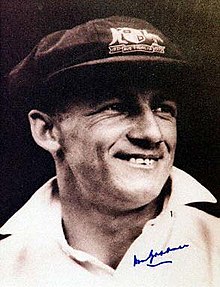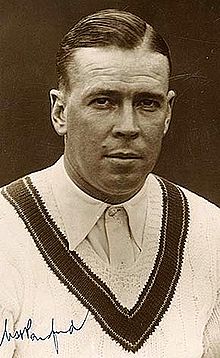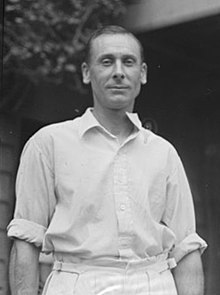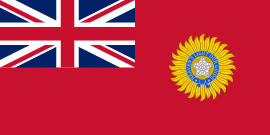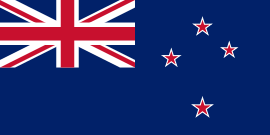
Olympic Hall of Fame
Player profiles
Bart King

Full name: John Barton King
Born: October 19, 1873, Philadelphia, Pennsylvania
Teams: United States of America (Olympics: 1896-1920); United States of America (Miscellaneous: 1892-1913); Gentlemen of Philadelphia (Other FC: 1893-1912); GS Patterson's XI (Other FC: 1894); Tioga (Halifax Cup: 1890-1895); Belmont (Halifax Cup: 1896-1912); Philadelphia Cricket Club (Halifax Cup: 1914-1916); Tioga Juniors (Miscellaneous: 1889-1890); Tioga Second XI (Miscellaneous: 1889-1892); Tioga (Miscellaneous: 1889-1895); Tioga Summer XI (Miscellaneous: 1891-1893)
Batting style: Right-hand bat
Bowling style: Right-arm fast
Notable achievements: United States of America
 (1896); United States of America
(1896); United States of America
 (1908); United States of America
(1908); United States of America
 (1912); United States of America
(1912); United States of America
 (1900); United States of America
(1900); United States of America
 (1904); Olympic Cricket Hall of Fame (1928)
(1904); Olympic Cricket Hall of Fame (1928)

Full name: John Barton King
Born: October 19, 1873, Philadelphia, Pennsylvania
Teams: United States of America (Olympics: 1896-1920); United States of America (Miscellaneous: 1892-1913); Gentlemen of Philadelphia (Other FC: 1893-1912); GS Patterson's XI (Other FC: 1894); Tioga (Halifax Cup: 1890-1895); Belmont (Halifax Cup: 1896-1912); Philadelphia Cricket Club (Halifax Cup: 1914-1916); Tioga Juniors (Miscellaneous: 1889-1890); Tioga Second XI (Miscellaneous: 1889-1892); Tioga (Miscellaneous: 1889-1895); Tioga Summer XI (Miscellaneous: 1891-1893)
Batting style: Right-hand bat
Bowling style: Right-arm fast
Notable achievements: United States of America
Batting and fielding averages
Edition|Mat|Inns|NO|Runs|H.S|Average|Balls|S/R|100s|50s|0s|4s|6s|Ct|St
1896 | 4 | 3 | 1 | 70 | 49* | 35.00 | 67 | 104.47 | 0 | 0 | 0 | 5 | 4 | 2 | -
1900 | 4 | 4 | 1 | 39 | 30 | 13.00 | 74 | 52.70 | 0 | 0 | 0 | 0 | 0 | 1 | -
1904 | 5 | 5 | 0 | 101 | 57 | 20.20 | 172 | 58.72 | 0 | 1 | 1 | 6 | 0 | 2 | -
1908 | 5 | 5 | 1 | 169 | 61 | 42.25 | 251 | 67.33 | 0 | 2 | 0 | 8 | 6 | 1 | -
1912 | 3 | 3 | 0 | 127 | 95 | 42.33 | 184 | 69.02 | 0 | 1 | 0 | 5 | 5 | 2 | -
1920 | 1 | 1 | 0 | 37 | 37 | 37.00 | 50 | 74.00 | 0 | 0 | 0 | 3 | 1 | 0 | -
Overall | 22 | 21 | 3 | 543 | 95 | 30.17 | 798 | 68.05 | 0 | 4 | 1 | 27 | 16 | 8 | -Bowling averages
Edition|Mat|Inns|Overs|Mdns|Runs|Wkts|BBI|Average|Econ|S/R|4w|5w
1896 | 4 | 4 | 38.0 | 1 | 140 | 6 | 3/22 | 23.33 | 3.68 | 38.0 | 0 | 0
1900 | 4 | 4 | 33.0 | 1 | 122 | 3 | 2/36 | 40.67 | 3.70 | 66.0 | 0 | 0
1904 | 5 | 5 | 43.4 | 2 | 152 | 13 | 6/21 | 11.69 | 3.48 | 20.2 | 0 | 1
1908 | 5 | 5 | 37.0 | 1 | 142 | 8 | 2/5 | 17.75 | 3.84 | 27.8 | 0 | 0
1912 | 3 | 3 | 25.0 | 0 | 71 | 11 | 8/11 | 6.45 | 2.84 | 13.6 | 0 | 1
1920 | 1 | 1 | 5.0 | 1 | 16 | 0 | 0/16 | N/A | 3.20 | - | 0 | 0
Overall | 22 | 22 | 181.4 | 6 | 643 | 41 | 8/11 | 15.68 | 3.54 | 26.6 | 0 | 2
1896 | 4 | 3 | 1 | 70 | 49* | 35.00 | 67 | 104.47 | 0 | 0 | 0 | 5 | 4 | 2 | -
1900 | 4 | 4 | 1 | 39 | 30 | 13.00 | 74 | 52.70 | 0 | 0 | 0 | 0 | 0 | 1 | -
1904 | 5 | 5 | 0 | 101 | 57 | 20.20 | 172 | 58.72 | 0 | 1 | 1 | 6 | 0 | 2 | -
1908 | 5 | 5 | 1 | 169 | 61 | 42.25 | 251 | 67.33 | 0 | 2 | 0 | 8 | 6 | 1 | -
1912 | 3 | 3 | 0 | 127 | 95 | 42.33 | 184 | 69.02 | 0 | 1 | 0 | 5 | 5 | 2 | -
1920 | 1 | 1 | 0 | 37 | 37 | 37.00 | 50 | 74.00 | 0 | 0 | 0 | 3 | 1 | 0 | -
Overall | 22 | 21 | 3 | 543 | 95 | 30.17 | 798 | 68.05 | 0 | 4 | 1 | 27 | 16 | 8 | -
1896 | 4 | 4 | 38.0 | 1 | 140 | 6 | 3/22 | 23.33 | 3.68 | 38.0 | 0 | 0
1900 | 4 | 4 | 33.0 | 1 | 122 | 3 | 2/36 | 40.67 | 3.70 | 66.0 | 0 | 0
1904 | 5 | 5 | 43.4 | 2 | 152 | 13 | 6/21 | 11.69 | 3.48 | 20.2 | 0 | 1
1908 | 5 | 5 | 37.0 | 1 | 142 | 8 | 2/5 | 17.75 | 3.84 | 27.8 | 0 | 0
1912 | 3 | 3 | 25.0 | 0 | 71 | 11 | 8/11 | 6.45 | 2.84 | 13.6 | 0 | 1
1920 | 1 | 1 | 5.0 | 1 | 16 | 0 | 0/16 | N/A | 3.20 | - | 0 | 0
Overall | 22 | 22 | 181.4 | 6 | 643 | 41 | 8/11 | 15.68 | 3.54 | 26.6 | 0 | 2
Over a 16-year period starting from 1896 to 1912, the United States of America were among the strongest cricketing nations in the Olympics. They were good enough to win medals for the sport of cricket in every edition of the Olympic Games played during this period, starting with a Gold medal in 1896, a Bronze medal in 1900, another Bronze medal in 1904 on home turf at St Louis, a Silver medal in 1908, and another Silver medal in 1912. The biggest reason behind their success was an all-rounder from Philadelphia by the name of John Barton King. Often considered to be the greatest player to never play Test cricket, Bart King went on to become the greatest all-round cricketer in the history of Olympic cricket over the course of a 24-year career spanning from 1896 to 1920.
King played predominantly as a more than competent top-order batsman and a fast bowler of unmatched skill who generally bowled with the new ball. Playing a total of 22 matches for the United States over the course of his long career, he aggregated 543 runs at an average of 30.17 with 4 half-centuries, and took 41 wickets at an average of 15.68, which included 2 five-wicket hauls. His highest score with the bat was 95 against Great Britain in the final of the 1912 Olympics, while his best bowling analysis of 8 for 11 came earlier in the same tournament against the Netherlands. He also captained the United States in 8 matches between 1908 and 1912, winning 5 and leading them to two Silver medals for cricket.
Making his Olympic debut as a 22-year old in the 1896 Olympic Games held in Athens, King scored 70 runs at 35.00 and took 6 wickets at 23.33 from 4 matches. He played a key role in the United States' 2-wicket victory over Australia in the opening match of the competition, taking 3 for 22 from 8 overs and scoring 20. His greatest contribution came in the tournament final against a powerful Great Britain lineup led by WG Grace, where he scored 49 off just 30 balls and later took 1 for 45 from 10 overs as the Americans sent ripples across the cricketing world by beating the world's greatest Test side to win a Gold medal for cricket.
Four years later in the 1900 Olympic Games where the United States won a Bronze medal for cricket, King endured his leanest Olympic tournament to date, scoring only 39 runs at an average of 13.00 and taking 3 wickets at 40.67 from 4 matches. His stats could have been made to look better as he had returned figures of 3 for 19 from 6 overs in a hastily arranged Bronze playoff against Canada which was won by the Americans, but the match was not given official status by the IOC. It would be the only time his average dipped below 20 with the bat and rose above 25 with the ball in an Olympic tournament. He returned stronger than ever in the 1904 Olympic Games played on the United States' home turf at St Louis, taking 13 wickets at a miserly average of 11.69, recording a then career best 6 for 21 against the Mixed Team and scoring 101 runs at an average of 20.20 after having re-invented himself as an obdurate top-order batsman. He also scored a maiden half-century with 57 against Great Britain in the tournament semi-final, but in vain as the United States lost the match by 6 wickets. They finished with another Bronze medal by beating the West Indies in the Bronze playoff, following which long-time captain John Lester handed over the reins of the United States team to King.
It was in his mid-thirties and after being made United States captain that King truly reached the peak of his powers as a player. In 8 matches during this period, he scored 296 runs at an average of 42.29 with the bat, and took 19 wickets at 11.21 with the ball. He led the United States to two Olympic finals in 1908 and 1912, both coming against Great Britain, where they only narrowly missed out on Gold medals due to a stubborn last-wicket pair and thrilling last ball six from Phil Mead. King gave it his all in both finals, scoring 61 off 53 balls with 6 sixes and taking 2 for 28 from 8 overs in 1908, and 95 off 108 balls with 5 sixes and figures of 1 for 23 from 10 overs in 1912. During the 1908 Olympics, he went past Bill Lockwood's record of 23 wickets to emerge as the leading wicket-taker in the Olympics, eventually finishing with 30 at the end of the season. At the age of 39 in 1912, he had seemingly hung up his boots after a stellar tournament during which he scored 127 runs at 42.33 and took 11 wickets at an unbelievable average of 6.45 from 3 matches. In doing so, he became only the third player after Clem Hill and Victor Trumper to cross the 500-run mark in Olympic cricket and the first to take more than 40 wickets in a career.
But it wasn't to be the last of him in the Olympics. Eight years later in 1920, following the end of the Great War and upon the resumption of the Olympic Games, King was tempted out of retirement at the age of 46 by the US Olympic Committee in a bid to add some much needed experience to a squad depleted by retirements of prominent players and casualties in the war. In what was the United States' only match against Canada, he acquitted himself well with 37 off 50 balls, but looked a shadow of his former self with the ball as he could send down only 5 wicketless overs for the cost of 16 runs after being brought on as third change. His knock helped push his Olympic career average above 30 and made him the batsman to hit the most number of sixes i.e 16 in the Olympics. The United States went on to lose to Canada for the very first time in the Olympics and endured their first ever medal-less campaign for cricket. He retired again, this time for good.
King played predominantly as a more than competent top-order batsman and a fast bowler of unmatched skill who generally bowled with the new ball. Playing a total of 22 matches for the United States over the course of his long career, he aggregated 543 runs at an average of 30.17 with 4 half-centuries, and took 41 wickets at an average of 15.68, which included 2 five-wicket hauls. His highest score with the bat was 95 against Great Britain in the final of the 1912 Olympics, while his best bowling analysis of 8 for 11 came earlier in the same tournament against the Netherlands. He also captained the United States in 8 matches between 1908 and 1912, winning 5 and leading them to two Silver medals for cricket.
Making his Olympic debut as a 22-year old in the 1896 Olympic Games held in Athens, King scored 70 runs at 35.00 and took 6 wickets at 23.33 from 4 matches. He played a key role in the United States' 2-wicket victory over Australia in the opening match of the competition, taking 3 for 22 from 8 overs and scoring 20. His greatest contribution came in the tournament final against a powerful Great Britain lineup led by WG Grace, where he scored 49 off just 30 balls and later took 1 for 45 from 10 overs as the Americans sent ripples across the cricketing world by beating the world's greatest Test side to win a Gold medal for cricket.
Four years later in the 1900 Olympic Games where the United States won a Bronze medal for cricket, King endured his leanest Olympic tournament to date, scoring only 39 runs at an average of 13.00 and taking 3 wickets at 40.67 from 4 matches. His stats could have been made to look better as he had returned figures of 3 for 19 from 6 overs in a hastily arranged Bronze playoff against Canada which was won by the Americans, but the match was not given official status by the IOC. It would be the only time his average dipped below 20 with the bat and rose above 25 with the ball in an Olympic tournament. He returned stronger than ever in the 1904 Olympic Games played on the United States' home turf at St Louis, taking 13 wickets at a miserly average of 11.69, recording a then career best 6 for 21 against the Mixed Team and scoring 101 runs at an average of 20.20 after having re-invented himself as an obdurate top-order batsman. He also scored a maiden half-century with 57 against Great Britain in the tournament semi-final, but in vain as the United States lost the match by 6 wickets. They finished with another Bronze medal by beating the West Indies in the Bronze playoff, following which long-time captain John Lester handed over the reins of the United States team to King.
It was in his mid-thirties and after being made United States captain that King truly reached the peak of his powers as a player. In 8 matches during this period, he scored 296 runs at an average of 42.29 with the bat, and took 19 wickets at 11.21 with the ball. He led the United States to two Olympic finals in 1908 and 1912, both coming against Great Britain, where they only narrowly missed out on Gold medals due to a stubborn last-wicket pair and thrilling last ball six from Phil Mead. King gave it his all in both finals, scoring 61 off 53 balls with 6 sixes and taking 2 for 28 from 8 overs in 1908, and 95 off 108 balls with 5 sixes and figures of 1 for 23 from 10 overs in 1912. During the 1908 Olympics, he went past Bill Lockwood's record of 23 wickets to emerge as the leading wicket-taker in the Olympics, eventually finishing with 30 at the end of the season. At the age of 39 in 1912, he had seemingly hung up his boots after a stellar tournament during which he scored 127 runs at 42.33 and took 11 wickets at an unbelievable average of 6.45 from 3 matches. In doing so, he became only the third player after Clem Hill and Victor Trumper to cross the 500-run mark in Olympic cricket and the first to take more than 40 wickets in a career.
But it wasn't to be the last of him in the Olympics. Eight years later in 1920, following the end of the Great War and upon the resumption of the Olympic Games, King was tempted out of retirement at the age of 46 by the US Olympic Committee in a bid to add some much needed experience to a squad depleted by retirements of prominent players and casualties in the war. In what was the United States' only match against Canada, he acquitted himself well with 37 off 50 balls, but looked a shadow of his former self with the ball as he could send down only 5 wicketless overs for the cost of 16 runs after being brought on as third change. His knock helped push his Olympic career average above 30 and made him the batsman to hit the most number of sixes i.e 16 in the Olympics. The United States went on to lose to Canada for the very first time in the Olympics and endured their first ever medal-less campaign for cricket. He retired again, this time for good.
Last edited:















































